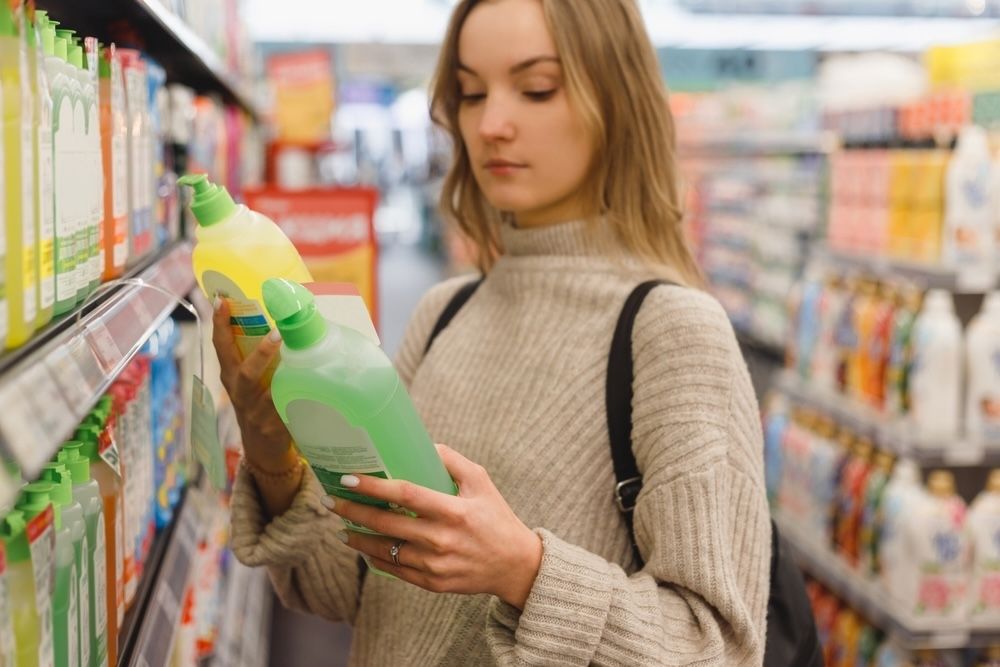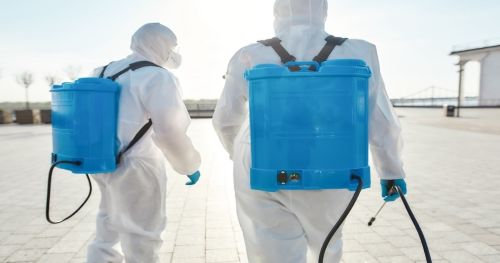The Impact of Sustainable Cleaning Products on Health and Environment

In recent years, the cleaning industry has seen a marked shift towards sustainability, with an increasing number of companies and consumers opting for eco-friendly cleaning products. This trend is driven by a growing awareness of the environmental and health impacts associated with conventional cleaning chemicals. Consumers are becoming more conscious of the harmful ingredients present in traditional cleaning products, which can cause respiratory problems, skin irritation, and other health issues. This increased awareness is propelling the demand for products that are not only effective but also safe for both users and the environment.
The movement towards sustainable cleaning is also influenced by the broader push for environmental conservation. Conventional cleaning products often contain chemicals that contribute to water pollution and other environmental hazards. For instance, phosphates, which are commonly found in many cleaning agents, can lead to the eutrophication of water bodies, adversely affecting aquatic life. Sustainable cleaning products, on the other hand, utilize biodegradable ingredients that minimize environmental harm. As a result, there is a growing emphasis on green cleaning practices that align with global sustainability goals.
This article highlights the importance of sustainable cleaning products, examining their benefits, challenges, and broader implications for the cleaning industry. By adopting eco-friendly cleaning solutions, companies can not only enhance their corporate responsibility but also cater to the growing segment of environmentally conscious consumers. Moreover, the shift towards sustainable products represents a significant opportunity for innovation within the industry, encouraging the development of new, effective, and safe cleaning solutions.
The Rise of Sustainable Cleaning Products
The shift towards sustainable cleaning products is not just a fad; it’s a response to mounting evidence about the adverse effects of traditional cleaning chemicals. Many conventional cleaning agents contain volatile organic compounds (VOCs) and other harmful substances that can lead to respiratory problems, skin irritation, and environmental degradation.
Key Drivers:
Health Concerns: Increased awareness of the health risks posed by chemical cleaning agents has led to a demand for safer, non-toxic alternatives.
Environmental Impact: The environmental footprint of conventional cleaners, including water pollution and chemical runoff, has spurred the search for greener options.
Regulatory Pressures: Stricter regulations and guidelines on the use of hazardous substances in cleaning products have pushed the industry towards sustainable solutions.

Benefits of Sustainable Cleaning Products
Sustainable cleaning products offer several advantages that make them appealing to both consumers and cleaning professionals.
Health Benefits:
Reduced exposure to harmful chemicals.
Lower risk of respiratory and skin conditions.
Improved indoor air quality.
Environmental Benefits:
Biodegradable ingredients minimize environmental pollution.
Reduced chemical runoff protects waterways and ecosystems.
Lower carbon footprint due to eco-friendly production processes.
Economic Benefits:
Potential cost savings from reduced healthcare expenses.
Enhanced brand reputation and customer loyalty.
Compliance with environmental regulations avoids potential fines.
Data and Statistics
Health Impact Data:
A study by the Environmental Working Group (EWG) found that 53% of cleaning products contain ingredients known to harm lungs.
According to the American Lung Association, many cleaning supplies or household products can irritate the eyes or throat, or cause headaches and other health problems, including cancer.
Environmental Impact Data:
The U.S. Environmental Protection Agency (EPA) states that household cleaning products can contribute to indoor air pollution and that VOCs are released into the air during product use and storage.
A report by the European Commission highlights that using biodegradable cleaning products can reduce water pollution by up to 50%.
Economic Impact Data:
Market analysis by Grand View Research indicates that the global green cleaning products market size was valued at USD 3.9 billion in 2020 and is expected to grow at a compound annual growth rate (CAGR) of 11.4% from 2021 to 2028.
Companies that adopt green cleaning practices often see a 20% reduction in operating costs due to savings on waste disposal and regulatory compliance.

Challenges and Considerations
Despite their numerous benefits, sustainable cleaning products are not without challenges. These challenges can affect their adoption and effectiveness in the market.
Cost
Sustainable products can be more expensive due to higher production costs and the use of premium ingredients. The production process for eco-friendly cleaning agents often involves the use of natural and organic materials, which can be costlier than synthetic chemicals. Additionally, sustainable products frequently require more rigorous testing to ensure they meet environmental and safety standards, further increasing costs. These higher prices can be a barrier for both consumers and businesses, particularly in a competitive market where cost is a significant factor in purchasing decisions. According to a report by the American Cleaning Institute, the cost of raw materials for sustainable products can be up to 50% higher than for conventional products.
Performance
There is a perception that eco-friendly products are less effective than their chemical counterparts. This skepticism stems from early iterations of green cleaning products, which sometimes lacked the cleaning power of traditional solutions. However, advancements in green chemistry have significantly improved the efficacy of sustainable products. For instance, many modern eco-friendly cleaners now incorporate powerful natural ingredients like citric acid and enzymes, which can be as effective as traditional chemicals in breaking down dirt and grime. Nevertheless, overcoming the lingering perception of inferior performance remains a challenge for manufacturers. Studies published in the Journal of Cleaner Production indicate that consumer education and transparent communication about product effectiveness can help mitigate these concerns.
Availability
Limited availability and a lack of standardization can make it difficult for consumers to identify truly sustainable products. The market for green cleaning products is still developing, and in many regions, these products are not as widely available as conventional cleaners. Moreover, the absence of standardized certifications and labels can confuse consumers, making it hard to distinguish genuinely sustainable products from those that are merely marketed as green. This problem is compounded by the prevalence of "greenwashing," where companies make misleading claims about the environmental benefits of their products. The Global Ecolabelling Network emphasizes the need for robust and universally recognized certification systems to ensure consumers can make informed choices.
Case Studies
Several companies have successfully integrated sustainable cleaning products into their operations, demonstrating the feasibility and benefits of this approach.
Case Study 1: Ecover
Ecover, a pioneer in sustainable cleaning, has built its brand around the use of plant-based ingredients and eco-friendly packaging. Established in 1979 in Belgium, Ecover was one of the first companies to introduce phosphate-free detergents, addressing the significant environmental issue of water pollution caused by conventional cleaning agents. Ecover’s products are designed to be biodegradable, ensuring that they break down naturally without harming aquatic life.
One of the hallmarks of Ecover’s commitment to sustainability is their use of renewable, plant-based materials in their formulations. This not only reduces the reliance on petrochemicals but also ensures that the products are safe for users and the environment. Ecover has also been innovative in its packaging, using recycled plastic and developing a range of products with refill options to minimize waste. Their factory in Malle, Belgium, is a testament to their green ethos, featuring a living roof that supports biodiversity and insulation, and the use of renewable energy sources like wind and solar power.
Ecover’s dedication to sustainability has not gone unnoticed. They have garnered a loyal customer base that values environmental responsibility and transparency. The brand's approach has also earned them several industry accolades, including certifications from renowned environmental organizations such as B Corp and the European Eco-Label, affirming their commitment to high environmental standards.
Case Study 2: Method
Method is another leader in the sustainable cleaning products market, renowned for its biodegradable formulations and use of recycled packaging. Founded in 2000 in San Francisco, Method has quickly risen to prominence due to its innovative approach to both product development and design. Method’s products are formulated from naturally derived ingredients, ensuring they are non-toxic and safe for both consumers and the environment.
A significant aspect of Method’s appeal is their packaging. They use bottles made from 100% post-consumer recycled plastic, reducing waste and the need for new plastic production. Method's sleek and colorful packaging designs have made their products highly recognizable and desirable, blending aesthetic appeal with environmental responsibility.
Method's commitment extends beyond product formulations and packaging. They operate a LEED Platinum-certified manufacturing plant in Chicago, which underscores their dedication to sustainability. This facility uses renewable energy and has a rooftop greenhouse to grow local produce, integrating sustainability into every aspect of their operations. Method’s efforts have made them popular in both residential and commercial markets, where there is a growing demand for effective and environmentally friendly cleaning solutions.
Case Study 3: Seventh Generation
Seventh Generation has long been at the forefront of transparency and sustainable practices in the cleaning industry. Founded in 1988, the company’s mission has been to inspire a consumer revolution that nurtures the health of the next seven generations. Seventh Generation achieves this by emphasizing the transparency of its ingredients and incorporating sustainable practices into every aspect of its business.
One of Seventh Generation’s standout practices is their commitment to ingredient disclosure. Unlike many conventional cleaning product manufacturers, Seventh Generation lists all ingredients on their labels, allowing consumers to make informed choices about the products they use. This transparency is crucial for building consumer trust and encouraging other companies to follow suit.
Beyond product transparency, Seventh Generation is deeply committed to renewable energy use and zero-waste initiatives. The company sources 100% of its electricity from renewable sources and aims to reduce its overall environmental footprint. Additionally, Seventh Generation is working towards becoming a zero-waste company by diverting waste from landfills through recycling and composting initiatives. Their commitment to sustainability extends to their packaging, which often uses recycled and recyclable materials to minimize environmental impact.
Seventh Generation’s holistic approach to sustainability has not only earned them a strong following among eco-conscious consumers but also numerous awards and certifications, such as B Corp certification and the USDA BioPreferred Program. Their practices serve as a model for other companies looking to integrate sustainability into their operations.

Future Outlook
The future of sustainable cleaning products looks promising, driven by continuous innovations aimed at improving performance and reducing costs. As the global focus on environmental sustainability intensifies, the cleaning industry is poised for significant growth and transformation.
One of the key drivers of this promising future is the rapid pace of technological advancements in green chemistry and product formulation. Researchers and manufacturers are developing new, more effective eco-friendly ingredients that match or even surpass the cleaning power of traditional chemicals. For example, advancements in enzyme-based cleaners and plant-derived surfactants are providing potent cleaning solutions without the environmental drawbacks of synthetic chemicals. These innovations not only enhance the efficacy of sustainable products but also help to lower production costs, making them more competitive with conventional cleaners.
Increasing consumer awareness about the environmental and health impacts of cleaning products is another major factor contributing to the growth of the sustainable cleaning products market. As more information becomes available about the dangers of traditional cleaning chemicals, consumers are more inclined to seek out and invest in green alternatives. Educational campaigns and the rise of eco-labeling initiatives, such as the Environmental Working Group (EWG) and Green Seal, are empowering consumers to make informed choices, further driving demand for sustainable products.
Governments and regulatory bodies worldwide are implementing stricter environmental regulations and policies to reduce the use of harmful chemicals in cleaning products. Policies such as the European Union's REACH regulation and California's Safer Consumer Products program are setting higher standards for product safety and environmental impact. These regulatory frameworks encourage manufacturers to innovate and transition towards more sustainable practices. Additionally, financial incentives and subsidies for green technology development are further propelling the industry forward.
Businesses are increasingly recognizing the importance of sustainability as part of their corporate social responsibility (CSR) strategies. Companies that adopt green practices not only improve their brand image but also gain a competitive edge in the market. Major players in the cleaning industry are investing in sustainable product lines and eco-friendly technologies to meet the growing demand from both consumers and commercial clients. This shift is also evident in the B2B sector, where businesses seek sustainable solutions to enhance their own environmental credentials.
The economic benefits of sustainable cleaning products extend beyond mere compliance and brand enhancement. Companies that invest in sustainable practices often experience cost savings through improved resource efficiency, reduced waste, and lower health-related expenses for employees. The market for green cleaning products is also expanding rapidly, with analysts predicting substantial growth in the coming years. According to a report by Grand View Research, the global green cleaning products market is expected to grow at a compound annual growth rate (CAGR) of 11.4% from 2021 to 2028, reaching a market size of USD 7.76 billion by 2028
Conclusion
The transition to sustainable cleaning products is a critical step towards safeguarding both human health and the environment. By embracing eco-friendly alternatives, the cleaning industry can significantly reduce its ecological footprint, minimizing the release of harmful chemicals into the air and waterways. This shift is not only a response to consumer demand for safer products but also a proactive measure to mitigate the long-term environmental damage caused by traditional cleaning agents. Sustainable products, with their biodegradable and non-toxic ingredients, offer a safer option for households and workplaces, protecting the health of those who use them daily.
Moreover, the adoption of sustainable cleaning products sets new standards for cleanliness and efficiency within the industry. Companies that prioritize green cleaning solutions demonstrate corporate responsibility and align with global sustainability goals, enhancing their brand reputation and consumer trust. This proactive approach can lead to long-term financial benefits, as businesses that invest in sustainable practices often experience cost savings through improved health outcomes and reduced regulatory risks. Additionally, the innovation driven by the demand for eco-friendly products can spur the development of advanced cleaning technologies, further enhancing the industry's overall efficiency and effectiveness.
In conclusion, the shift towards sustainable cleaning products offers substantial benefits for both the planet and its inhabitants. As more companies and consumers embrace these eco-friendly alternatives, the cleaning industry can play a pivotal role in promoting a healthier, more sustainable future. This transformation not only supports environmental conservation efforts but also provides long-term advantages for businesses, including enhanced brand loyalty, compliance with environmental regulations, and potential cost savings. By leading the way in sustainability, the cleaning industry can set a powerful example for other sectors to follow, driving a broader movement towards a more sustainable and healthy world.
Sources:
Environmental Working Group - Cleaning Supplies and Your Health
U.S. Environmental Protection Agency - Volatile Organic Compounds' Impact on Indoor Air Quality
European Commission - Green and Sustainable Cleaning Products
Grand View Research - Green Cleaning Products Market Size & Share
Sustainable Business Network - Economic Benefits of Green Cleaning
Check more articles on our blog

Electrostatic Spraying in Commercial Cleaning

Top 10 Cleaning Companies in Kaiserslautern, Germany

Exploring the Role of Robotics and Automation in the Future of the Cleaning Industry
